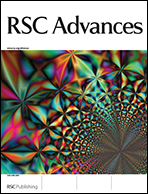ZrB2 modified carbon–phenolic (C–Ph) composites are fabricated by the impregnation method, and the ablation performance of the composites is tested using an oxyacetylene flame. In addition, the microstructure of the ablation zone is observed with a scanning electron microscope (SEM). The results indicate that the linear ablation rate decreases with increasing ZrB2 content, and the ZrB2–C–Ph composites have their lowest linear ablation rate when the ZrB2 to phenolic resin weight ratio is 0.09 : 1. The main ablation mechanisms of the composites with low loading of ZrB2 are oxidation and char spallation. When more ZrB2 particles are introduced, a continuous protective ZrO2 layer is properly formed on the ablated surface of the specimen, and the stripping of the protective ZrO2 layer and the oxidation of carbon are the main ablation mechanisms. Furthermore, the forming–stripping process of a protective ZrO2 layer occurred continuously and was repeated during the ablation process.
You have access to this article
 Please wait while we load your content...
Something went wrong. Try again?
Please wait while we load your content...
Something went wrong. Try again?


 Please wait while we load your content...
Please wait while we load your content...